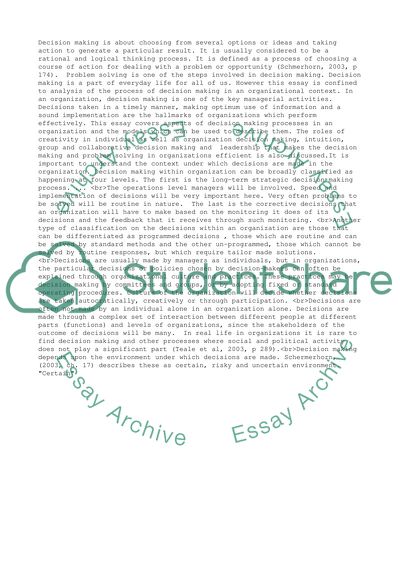Cite this document
(“Models of decision making and problem solving Essay”, n.d.)
Models of decision making and problem solving Essay. Retrieved from https://studentshare.org/management/1499111-models-of-decision-making-and-problem-solving
Models of decision making and problem solving Essay. Retrieved from https://studentshare.org/management/1499111-models-of-decision-making-and-problem-solving
(Models of Decision Making and Problem Solving Essay)
Models of Decision Making and Problem Solving Essay. https://studentshare.org/management/1499111-models-of-decision-making-and-problem-solving.
Models of Decision Making and Problem Solving Essay. https://studentshare.org/management/1499111-models-of-decision-making-and-problem-solving.
“Models of Decision Making and Problem Solving Essay”, n.d. https://studentshare.org/management/1499111-models-of-decision-making-and-problem-solving.


